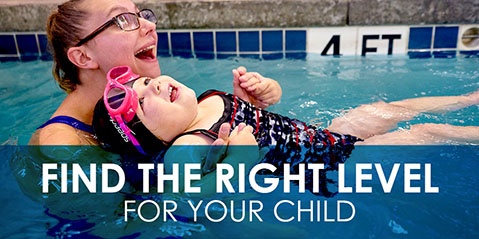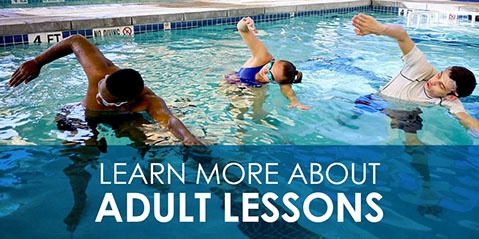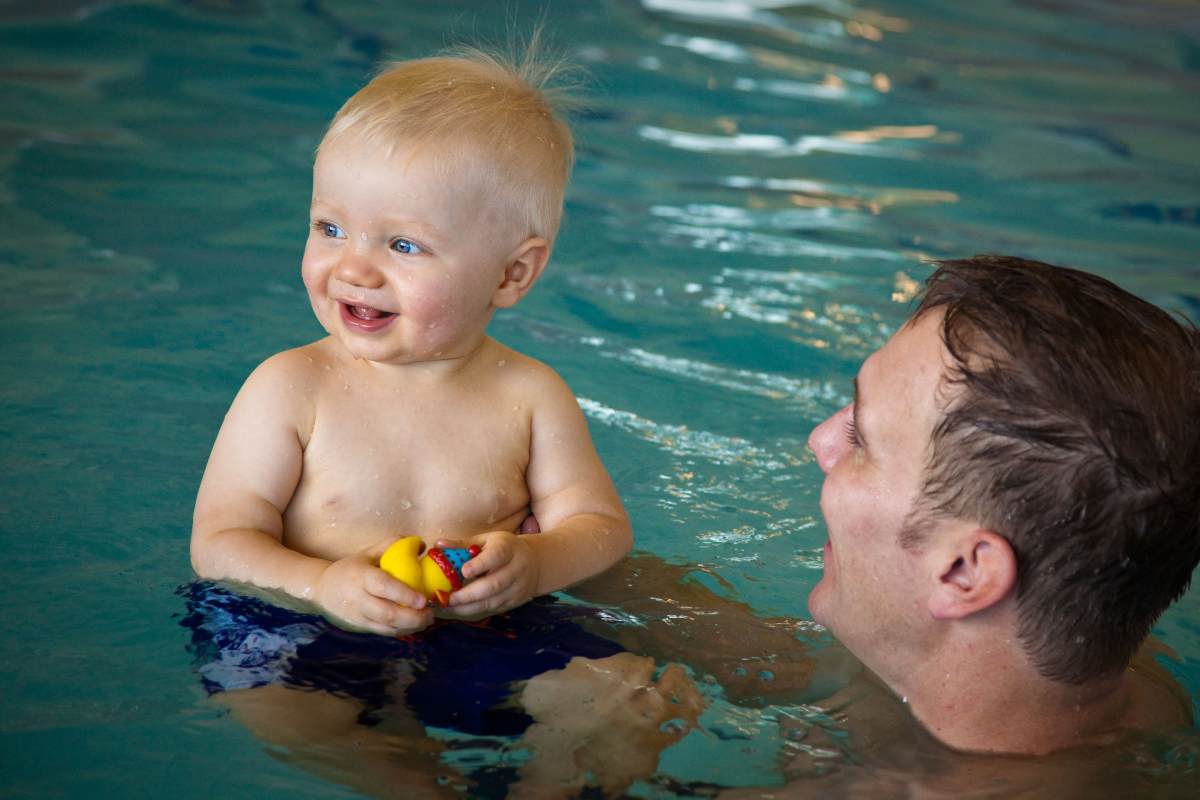
Summer as a kid could quite possibly be the most amazing time on planet earth, at least it was for me! For as long as I can remember my summers growing up ALWAYS involved swimming. Family vacations revolved around swimming and boating at the lake long before I was able to walk. Then, as I grew up summers consisted of cannon balls in the neighbor’s pool, splashing in the creeks while camping and weekly excursions to the community pool. I was definitely a water loving, sun seeking, adventure kind of kid. I was also lucky, I was exposed to water at a very early age and never had any qualms about diving right in. I loved the water from day one and still do to this day.
Unfortunately, some kids have different experiences than my own. To many, being submerged into water is a terrifying experience even if they have never had a negative encounter with water. Some just have an inherent fear that will take time, and practice to conquer. Swimming provides so many great benefits, but what do you do when your little ones are scared to take the plunge?
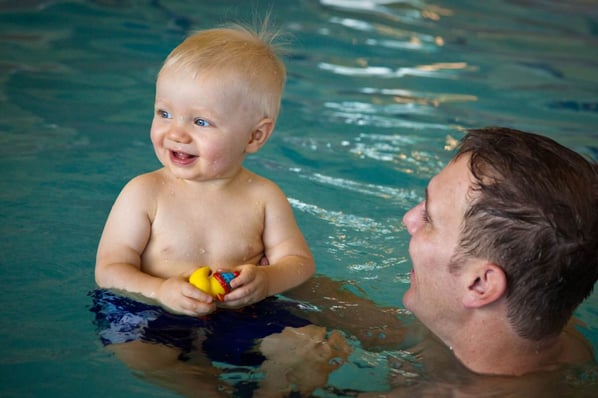
Start Small
Introduce your child to water in a small controlled environment like a bath tub or purchase a small plastic kiddie pool for the back yard. Once your child is old enough to sit up by themselves fill the bath tub or pool up just enough to cover their lower half, or to whatever level they are comfortable with. It will also help to use warm water which is always more comfortable and relaxing. Include their favorite toys; some that float and some that sink to help them visually understand how different objects react to water. Add a bucket or cup to encourage your child to fill it up and pour it over their head and body to feel what it’s like to have water on their face and skin. Getting your child comfortable with water through different ways gives them the confidence needed to fully get into the water.
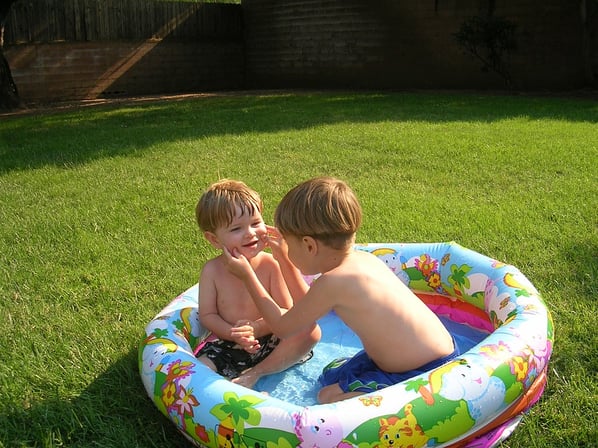
Wet Faces
Many kids are uncomfortable submerging their whole head underwater and often strongly dislike getting their face wet. Well-fitting goggles help to keep the water out of their eyes allowing for more comfort and the ability to keep their eyes open at all times. Blowing bubbles into the water is also a fun way to encourage children to get their faces wet and helps to develop breath control.
Toes in the Water
After your child is comfortable with the general idea of being in/around water, start by sitting on the edge of the larger pool with their feet dangling into the water, or on the stairs if they are available. As your child grows comfortable with the surrounding water, continue to immerse deeper into the shallow end of the pool where your child can still stand on their own.
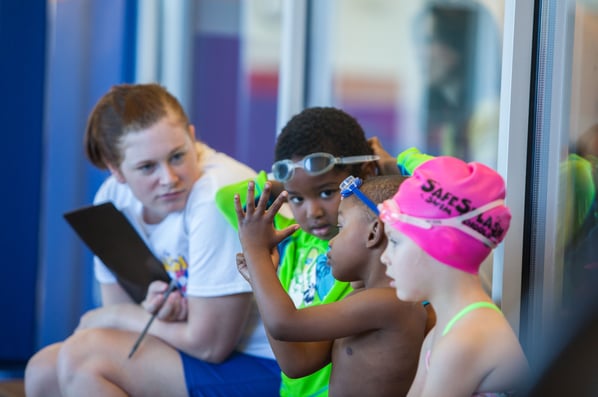
Splash with Friends!
Children are often more comfortable trying new things when they see that their friends or siblings are having fun and enjoying the activity as well. Add in games like Red Light, Green Light, or place toys on the pool floor or stairs just deep enough to go underwater but not too deep in order to retrieve them.
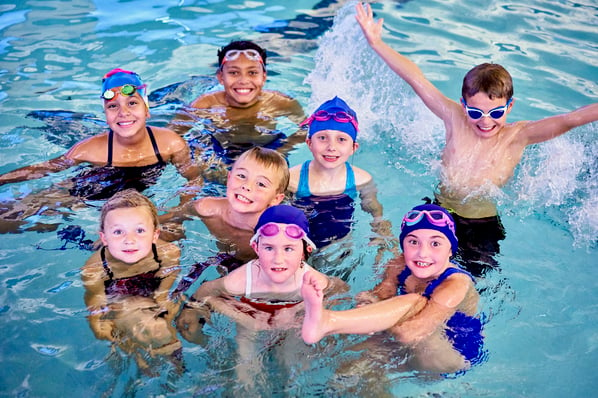
Monkey See, Monkey Do
Kids love to mimic, the more they see you enjoying the water, the more they will too! So get it and make a splash! Simon Says, or Follow the Leader are great ways to encourage your child to follow you through different areas of the water as well.
Professional Lessons
Learning to swim is a defining experience in a child’s life, an experience that creates lasting memories similar to learning to ride a bike. For a child with an extreme aversion to water, private lessons with a skilled instructor are beneficial due to the individual attention. Not only do professional lessons teach safety and lifesaving skills but also help children develop confidence, build friendships and encourage healthy habits.

The most important step is to make sure to allow your child to proceed at their own pace and give them time to adjust to their comfort level. Focus on fun, rather than the fear and remember to include positive praise as often as you can. Swimming is a life skill and fun for all ages, if you find your child isn’t the little swimmer you expected them to be, remember to be patient, encouraging and offer plenty of opportunities in the water.
Interested in lessons near you? Get started today!

